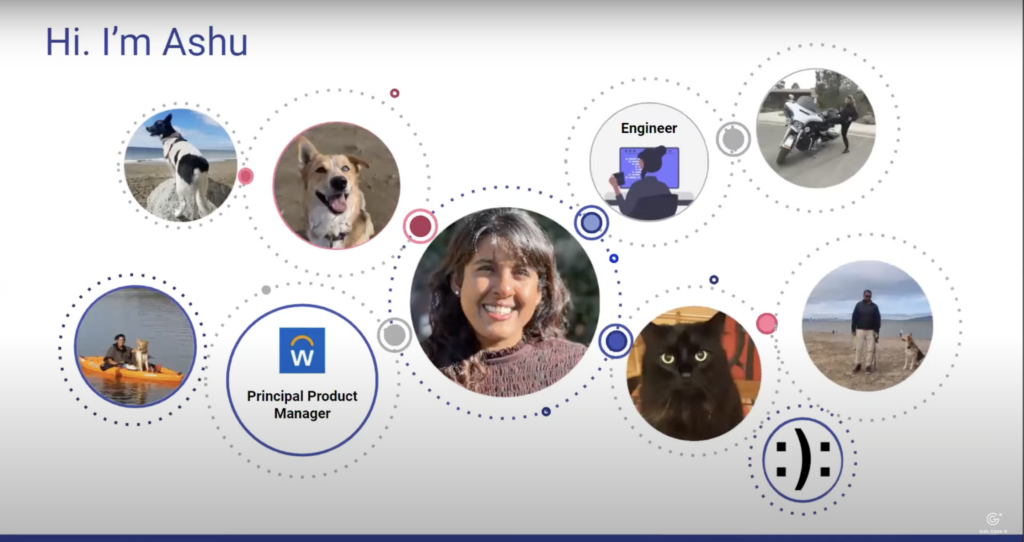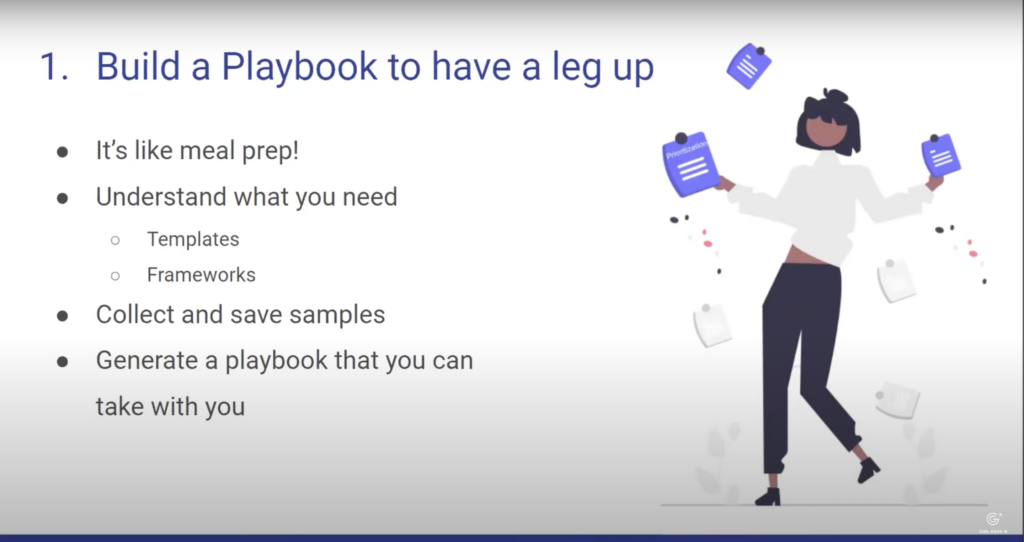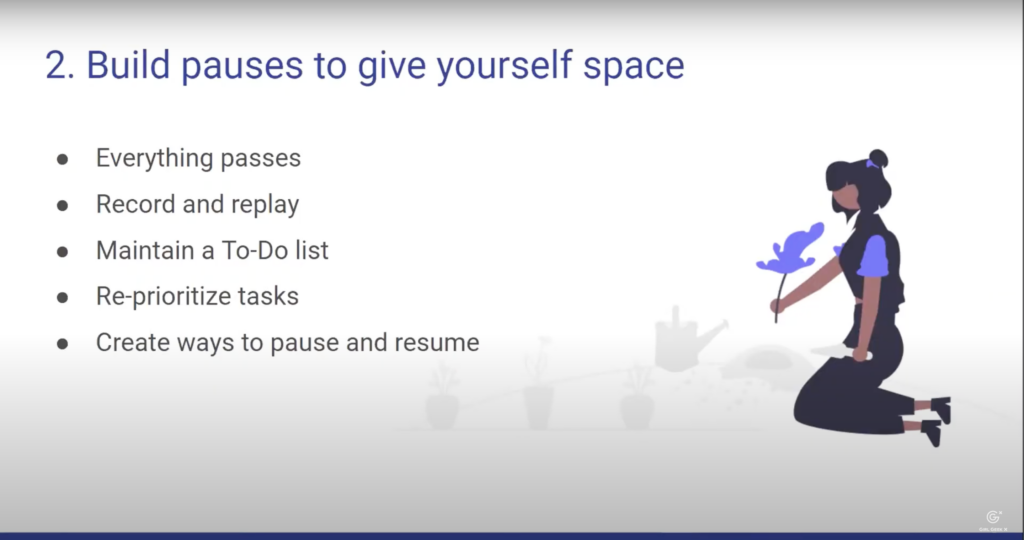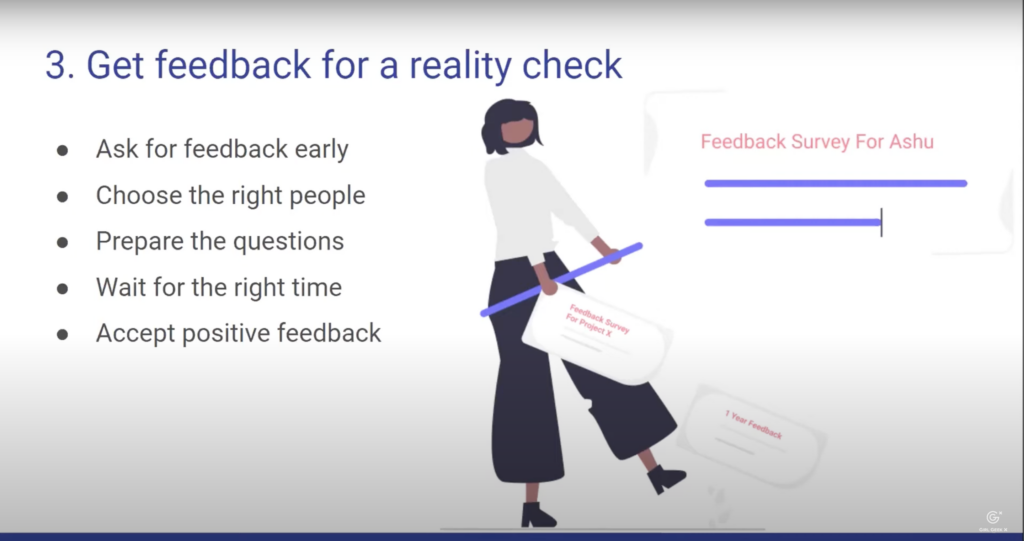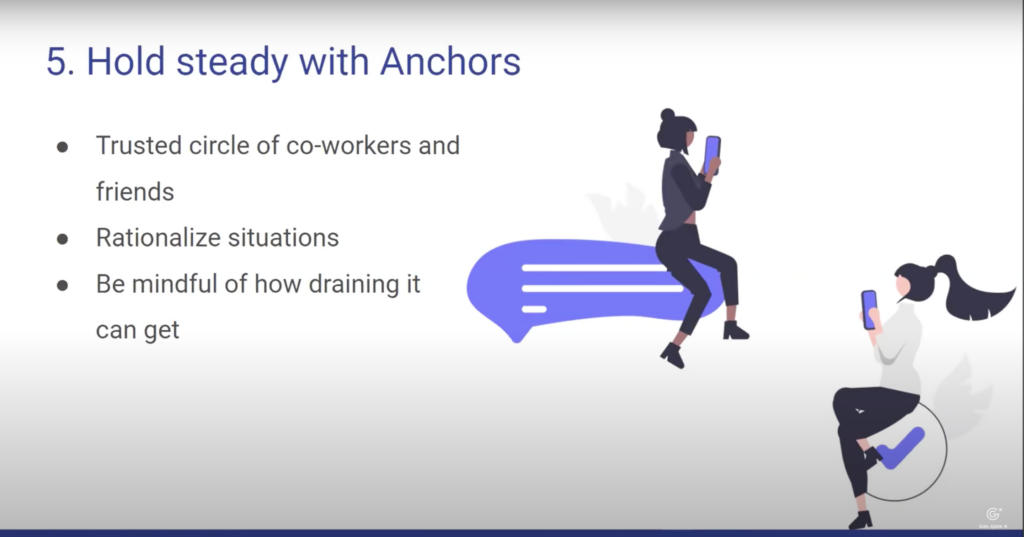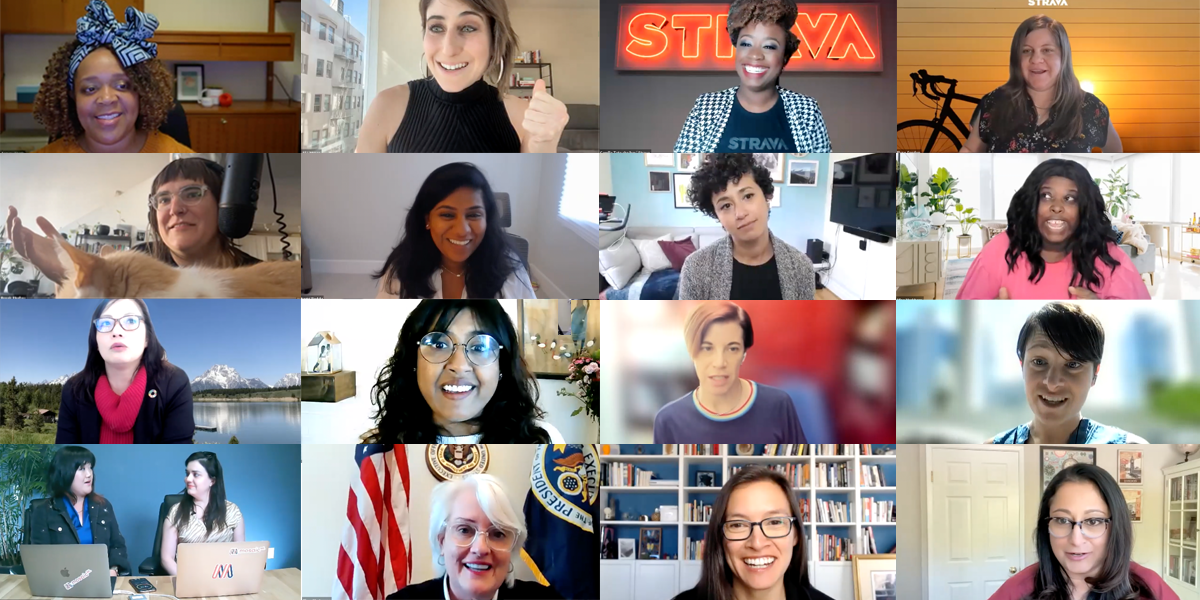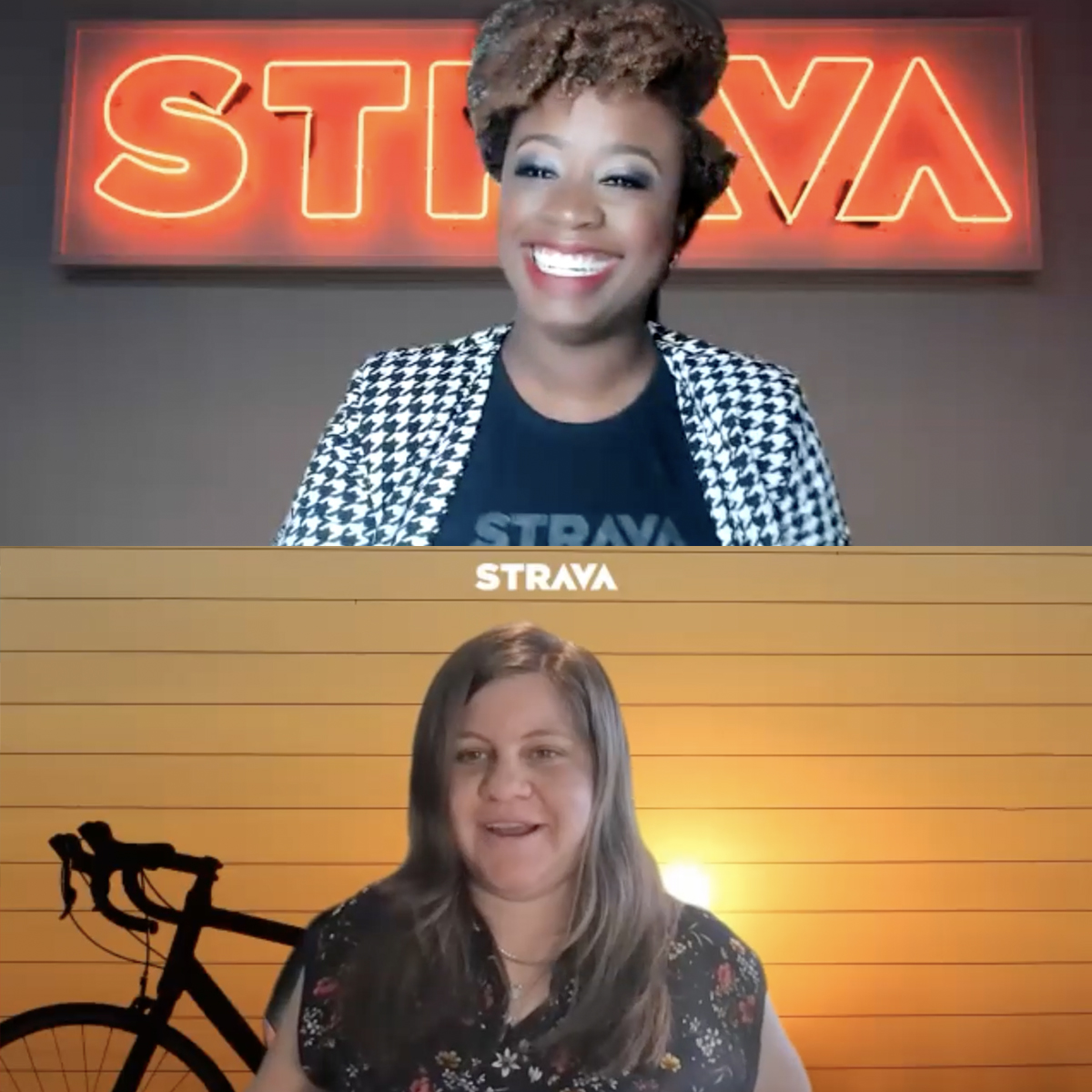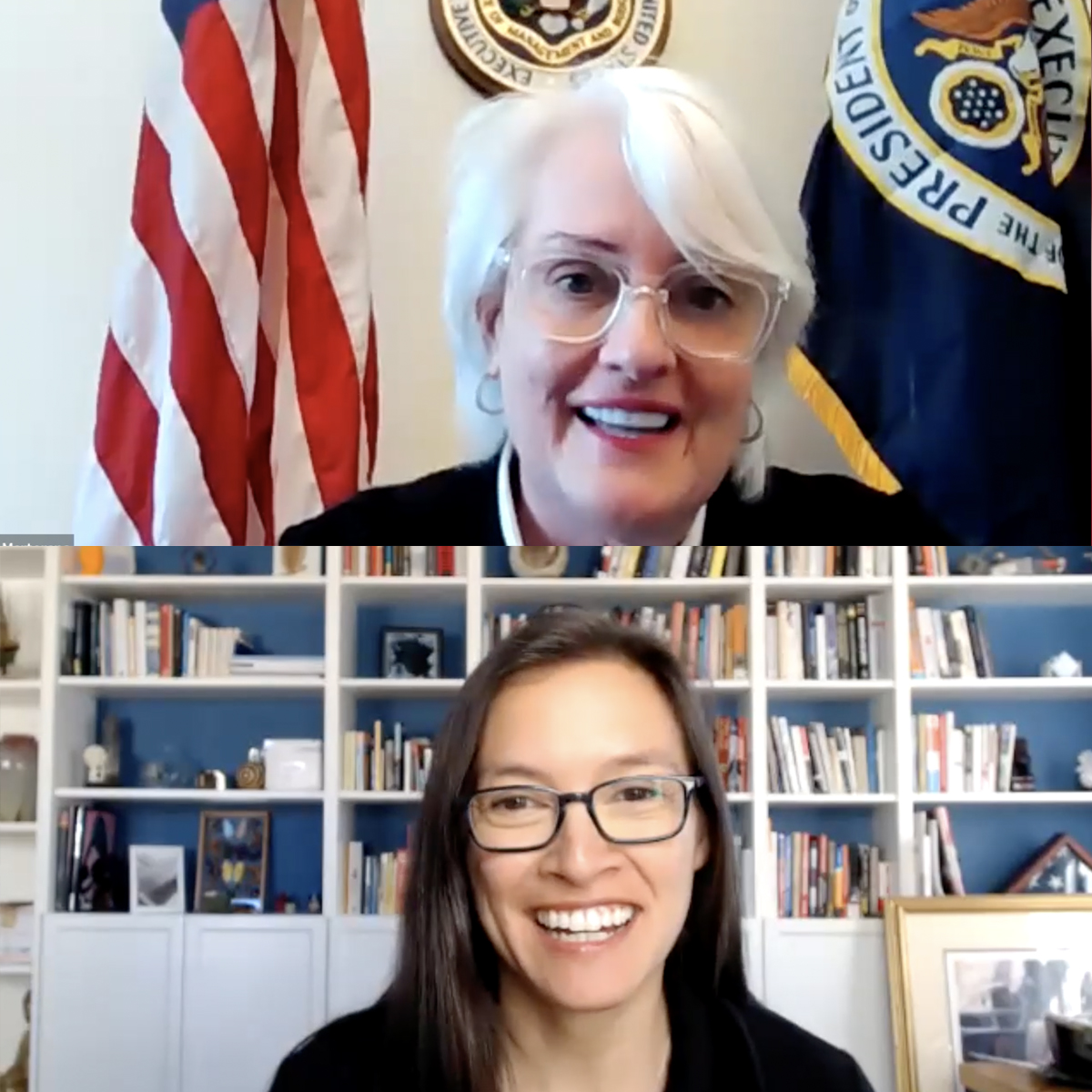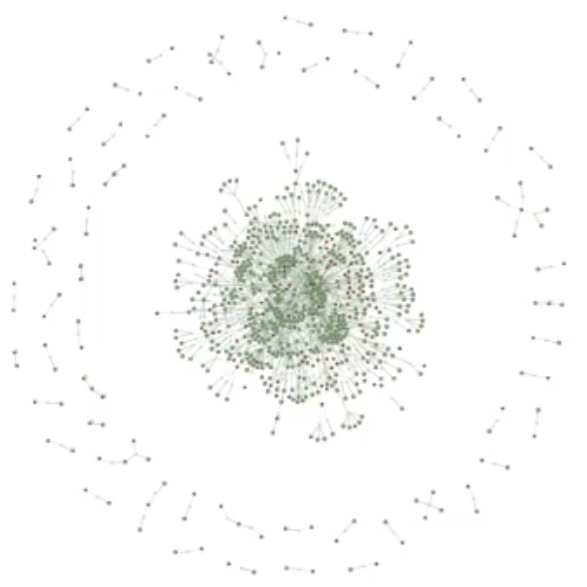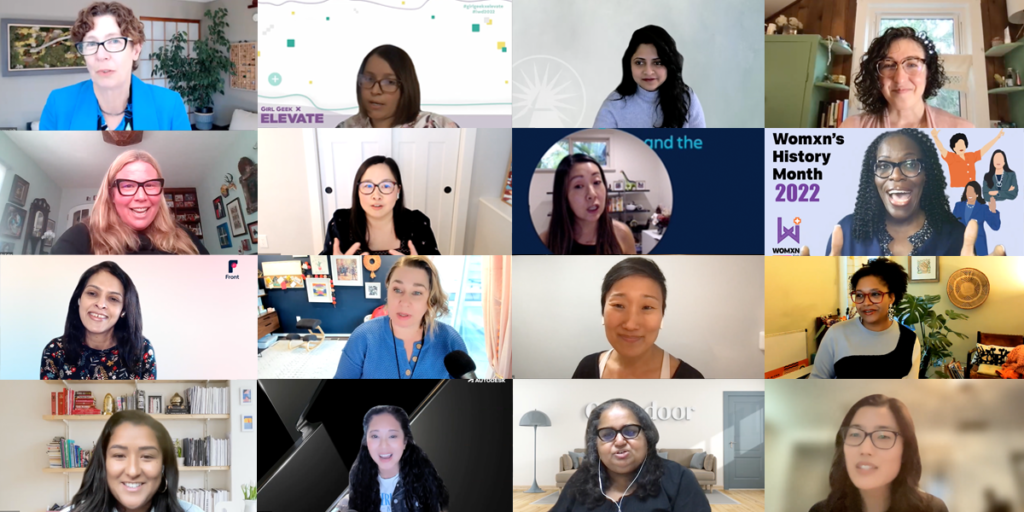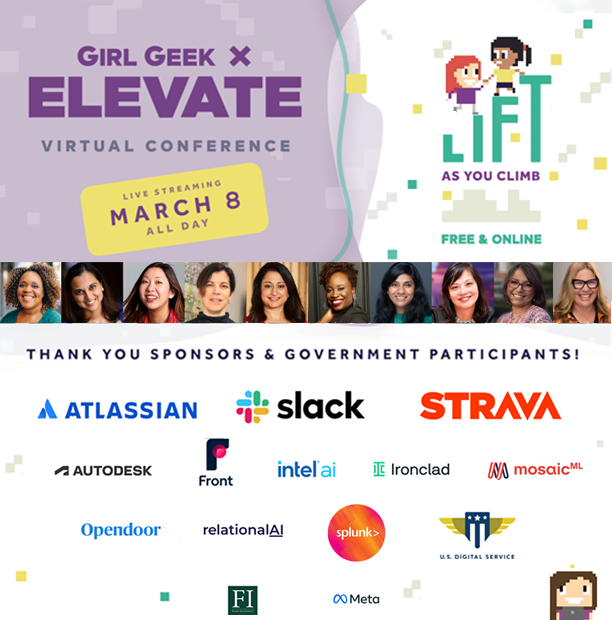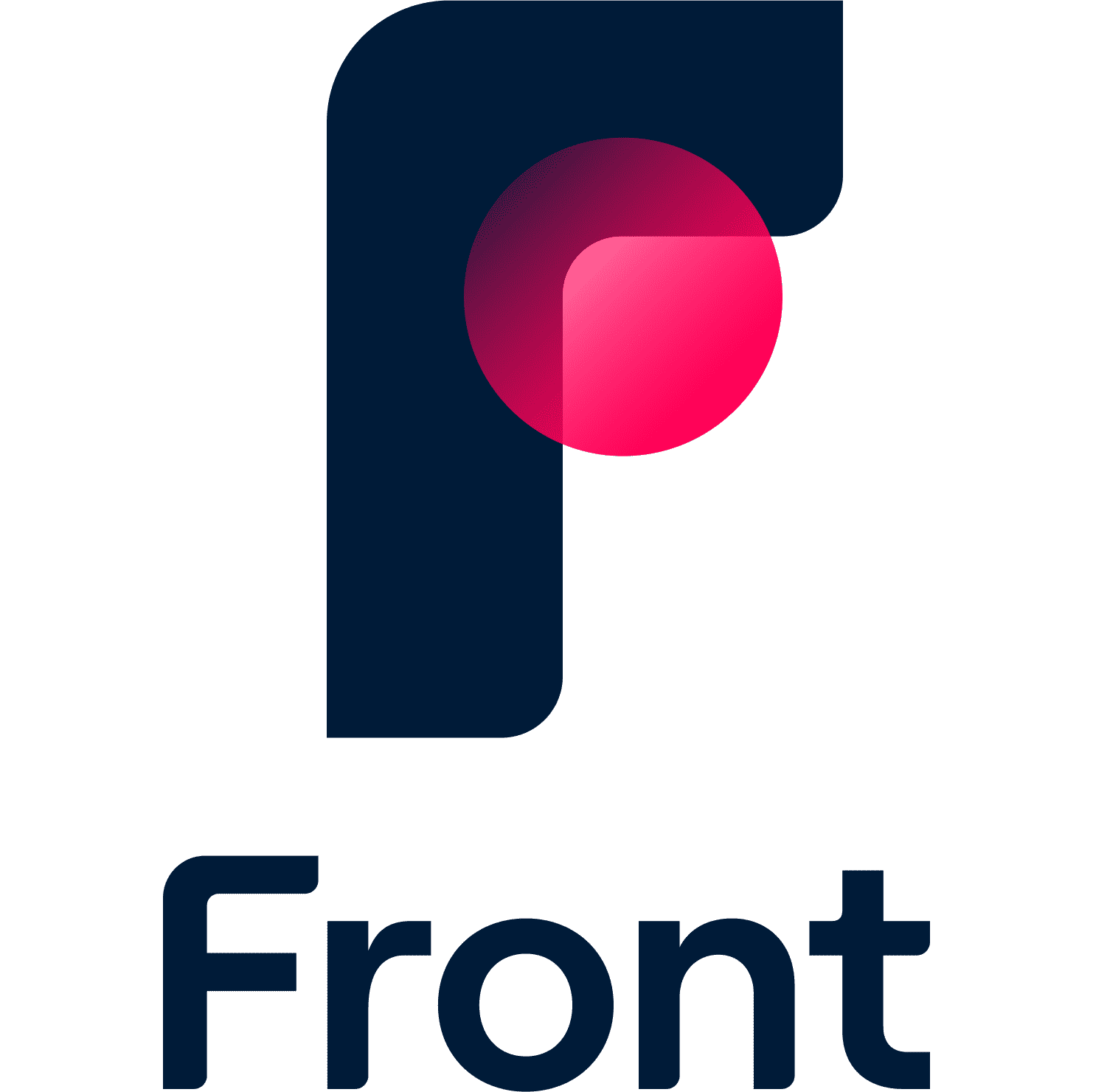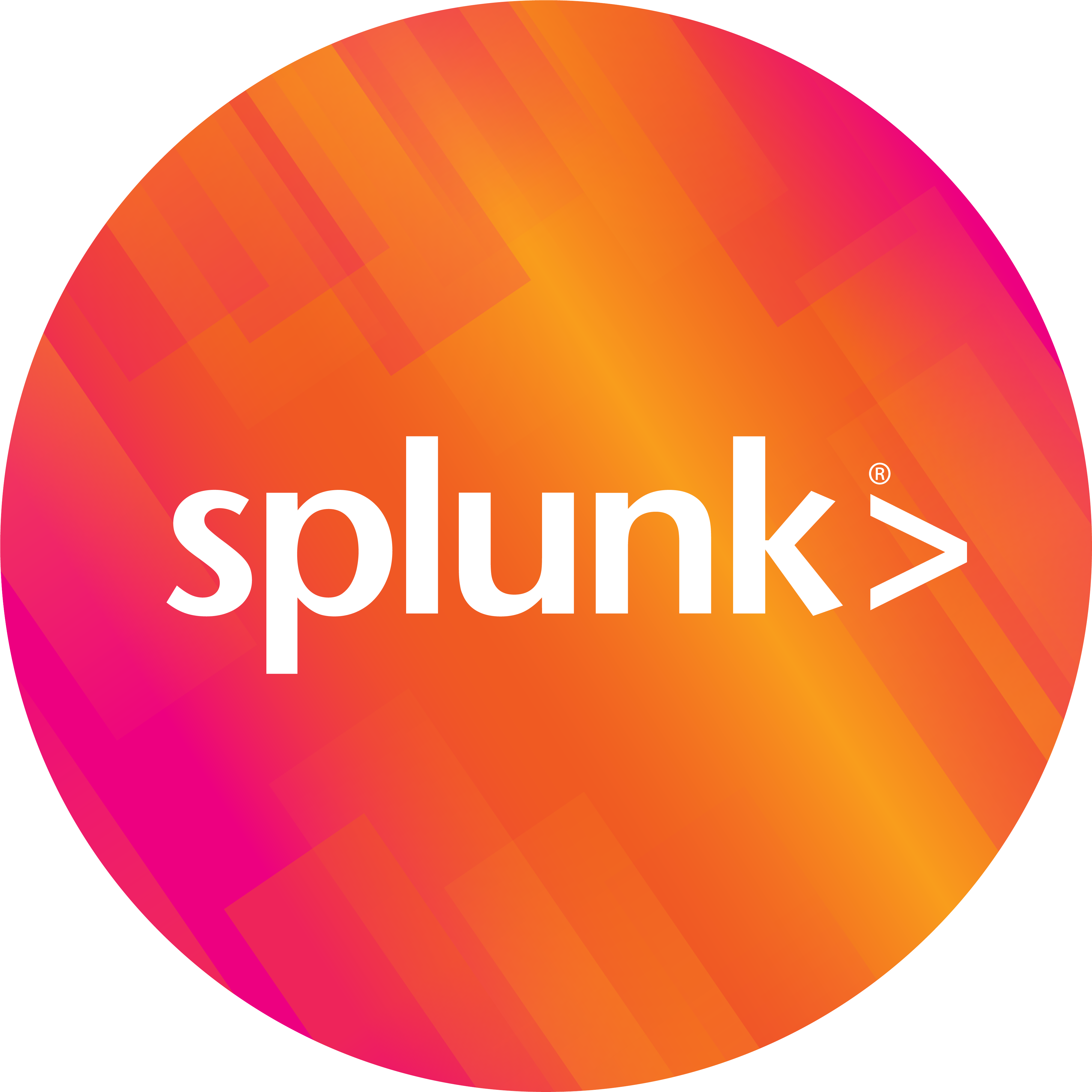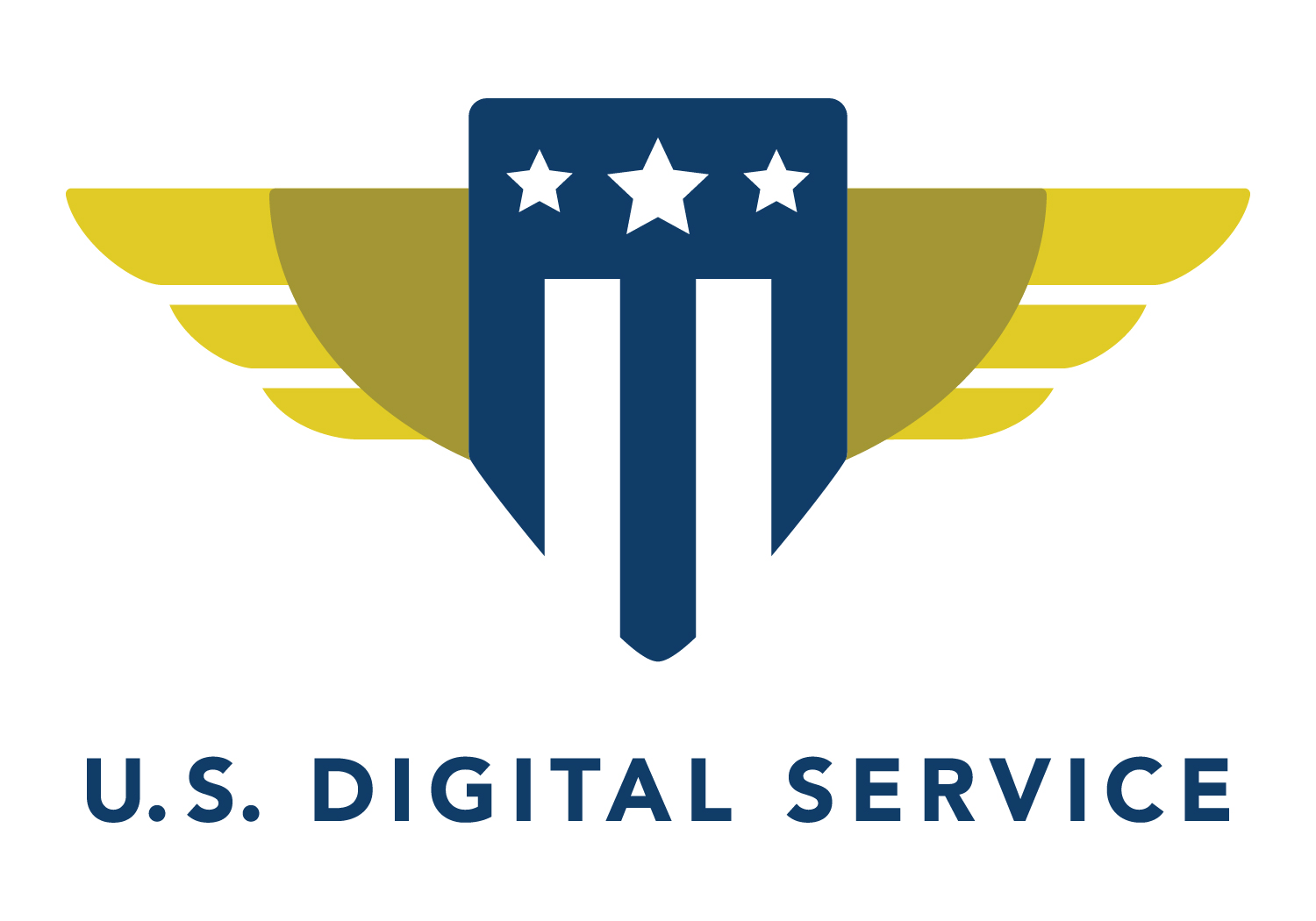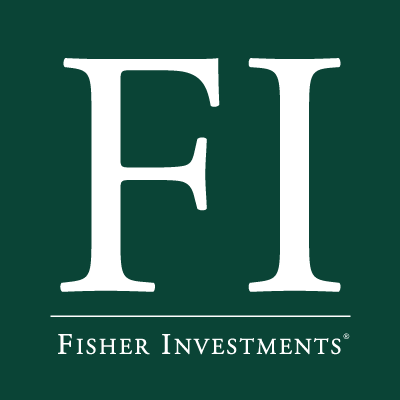Like what you see here? Our mission-aligned Girl Geek X partners are hiring!
- Check out open jobs at our trusted partner companies.
- Watch all Elevate 2022 conference video replays!
- Does your company want to sponsor a Girl Geek Dinner? Talk to us!
Angie Chang: We are having our next panel now. We want to welcome Claire Martorana the Federal Chief Information Officer for the Office of Management and Budget in the Executive Office of the President hailing from Washington, DC.
Angie Chang: And previously, she served on the USDS team at the US Department of Veterans Affairs, working on digital monitorization for veterans and prior to her tour of duty in government tech or gov tech with the USDS she was president at Everyday Health and Senior Vice President at Web MD.
Angie Chang: Also, we want to welcome Mina Hsiang. She is a third Administrator named at the United States Digital Service. She is the first woman and first Asian American to lead the USDS and she brings her experience and expertise to the government. Notably, she was previously a VP at Devoted Health.
Angie Chang: Hi Claire. So get things started. Why don’t you tell us a bit about yourself and what is the biggest digital initiatives that you’ve been working on and some of the challenges that your teams have been taking on.
Claire Martorana: Thanks Angie. Hey, Mina. Nice to join you all today.
Claire Martorana: I think probably the thing I’m focused on the most these days is cyber security. Cyber security is top of mind for this administration and kind of top of mind at this moment in time, as you can all imagine. And we are working across the federal enterprise.
Claire Martorana: So my job as federal CIO is, I help coordinate across all of the federal agencies, there’s 24 CFO act agencies, which are really big agencies then about 140 small agencies, including the Marine Mammal Council, so gigantic and then very tiny, making sure that our entire federal enterprise is safe and secure.
Claire Martorana: Recently in this administration, we launched a cybersecurity executive order, and then we just published out a zero trust strategy to try and help bring all our agencies up to a different level.
Claire Martorana: So that’s what I’ve been focused on and I’ve had the wonderful opportunity to work with Mina quite a bit on our customer experience executive order. So maybe I’ll turn it over to you Mina.
Mina Hsiang: Awesome. And thank you so much for having us, this is super exciting great to see you Claire. Tons is going on across government, we’ve been very focused on things that improve services for the public, things that make key needs of the public more accessible.
Mina Hsiang: So things that you have seen, launching vaccine [inaudible] and adding testing sites, adding appointment availability, launching COVID test [inaudible] and helping everyone get access to new testing, standing up tools and a site and an engagement model to enable folks to more easily get access to the child tax credit, understand what entitled to at a simple reading level…
Mina Hsiang: Which is not easy for taxes and then to support people in applying for the child tax credit and in filing their taxes which is necessary to get all the credits they deserve working on tools that help us do analysis and evaluation in the interest of climate and economic justice investments and making sure that we can ensure that Federal Dollars are going to things that support those goals.
Mina Hsiang: Working on modernizing WIC, which is Women, Infants and Children, and making sure that this program which is run by the states but has a lot of technology and operations behind it has the tool that make it accessible for people at critical time.
Mina Hsiang: So we’ve been really deeply engaged on a number of programs across government as Claire said, many of them are customer experience focused as well as some things that are a little bit more security or processing focused but really helping improve government services across many areas that touch everyday people.
Angie Chang: That’s really great to hear. Thank you for sharing all those examples of the fine work that you’re doing. So can you tell me about what is the CXEO and why we should care about and how you are working to deliver better services?
Mina Hsiang: Absolutely. And Claire jump in. So the CXEO… Government is like organized in this very bureaucratic way, where we have different agencies that all touch the same stakeholders.
Mina Hsiang: We run different programs that have come out in different laws, but the public doesn’t care about any of that. Like you’re a person, you have a moment in your life. You need services, you deserve access to things that you’re entitled to at that point in your life, for one reason or another, you need to register, you need to retire and register for an array of different things that you’re entitled to at that point.
Mina Hsiang: And so this is really the nexus of a lot of our work and our observations and our understanding of how people really need to interact with services. The best companies think much more about the customer at the center. And so this was us saying let’s orient government in this way.
Mina Hsiang: Let’s not make it an exercise for every individual to go learn about every program and have to navigate the same thing over and over again.
Mina Hsiang: How do we start orienting with a mindset that says, how do we serve the individuals who are entitled to and dependent on and use government programs everyday, some of them are about support, but some of them are just about registering and becoming part of the system.
Mina Hsiang: And so putting that all together has been the nexus and that has required as Clara says. And we talk about a lot, it’s really a team sport, right?
Mina Hsiang: That all of a sudden requires all these parts of government to have a similar customer focus orientation, to hold hands and say, okay, so how are we going to serve people?
Mina Hsiang: And it’s been awesome to work with Claire. We have deployed… USDS deploys, a bunch of teams across agencies to help implement that. And then Claire’s team. And I’ll let you talk about it provides the connective tissue and the super structure that makes sure that this all hangs together. So it’s been great to partner and work really closely together in this, but Claire.
Claire Martorana: Yeah. And I think to build on what Mina said – a person, and I think this was really prevalent during the pandemic, a person’s just trying to get something done, they don’t know the org chart of some federal agency. Half the time you don’t even know the name of the agency that you’re trying to get services from.
Claire Martorana: So what we are trying to do with the customer experience executive order is do what we have done in the private sector, right? Which is try to care for your customer. A, know who your customer is, make sure you’re designing your products and services with your customers, not for them.
Claire Martorana: And recognizing that in many instances, you’re possibly going to have to intersect with multiple agencies to get one thing done. And then maybe an office is closed. So the only way a person knew how to approach the government was to go to this place and talk to a person. And then during the pandemic that wasn’t available.
Claire Martorana: And so we’ve spent a lot of time working with all of the work that the US Digital Service has done. And then with other folks across government saying, how do we not only improve the digital experience for people who can use digital channels, right?
Claire Martorana: Not everybody can, some people still want to get somebody on the phone at a call center or walk into a building and have a person to person interaction. We have to think omnichannel. We have to meet people where they are also based on their skills and abilities, because not everybody speaks English.
Claire Martorana: Not everybody understands the legalese on these forms that sometimes they’re asked to fill out, to even get access, to speak to a person about something.
Claire Martorana: So we tried to step back be the customer and really think about how we can make navigating agencies more efficient and effective based on the tools we all know how to use right. In the private sector, all of our phones and the channels that we know how to use.
Claire Martorana: And I think the pandemic was really interesting because it broke down a lot of bureaucratic silos. People previously were like, we can’t do that statute, A, B, C, G, E, F, won’t allow us and during the pandemic, a lot of those barriers were broken down.
Claire Martorana: So we were able to take advantage of that and really accelerate some of this work that was started in government, but we’ve really had the great opportunity to take it several steps further.
Mina Hsiang: Absolutely.
Angie Chang: So what does this mean in terms of execution when it comes to hiring?
Mina Hsiang: So much hiring! OK. I mean, we talked about this customer experience EO. But even just the EO enumerates 36 life experiences that are specifically going to get improved across 17 agencies, in addition to many programs that are not specifically enumerated, all of the things that I listed that we’re working on, none of those are listed in the customer experience EO, because those are additional things that we’re committing to, all of the cybersecurity work that Claire has laid out, needs to be built into all of this.
Mina Hsiang: And so you all know from where you sit, how much expertise, how much skill and focus it takes to accomplish things in this arena.
Mina Hsiang: And we need to bring in a mix of people who come from experiences like the audience here, private sector, public sector, people who have done this at state and local levels, we’re working to bring all of those people together and actually build these integrated implementation teams to work shoulder to shoulder with the staff at the agents who have been supporting the services and understand the customers to build and enable all of this.
Mina Hsiang: Change requires a lot of work and a lot of new thinking and collaboration. And so Claire and I have been deeply focused on working across the government to say, now is an amazing time, there is so much to do, there’s so much support. Jump in Claire.
Claire Martorana: Yeah. And I would say, if you’ve ever interacted with the government and you went to a website and went, wow, this looks old or, wow, I wish I could do this other thing. It’s because you’re right. And we need to be a to do that. But the only way we’re able to do that is if people like you all come along with us on this journey.
Claire Martorana: We need to hire people that look like the American public, that interact across the nation.
Claire Martorana: We want people from different places. It can’t just be New York, DC, Atlanta, Chicago, and whatever.
Claire Martorana: We need people that come from all different walks of life because we all bring such different perspectives. When I talk to somebody who is coming from Kansas and they’re talking about having to drive an hour and a half to a local hospital, that’s different from where I live.
Claire Martorana: And that’s really important for me to have that understanding and perspective when we’re thinking about developing products and services. So the people we want to come and join us on this journey are all of you. I never thought I would join government.
Claire Martorana: I read a WIRED article about president Obama’s tech team. And it had a little thing at the bottom that says, USDS join. And I clicked on, I went online, I clicked on it and I filled out this application.
Claire Martorana: I never thought anyone would call me, a lot of us have imposter syndrome and parts of our careers. And we go, oh, all those people are really smart. And they know how to do all the things.
Claire Martorana: You are all those people, everybody listening right now, you are the people that actually can come into government, do a tour of duty and have an outsized impact.
Claire Martorana: Millions and millions of people can benefit from the skills you have. And that’s a really sobering thing to think about, but it is really true.
Claire Martorana: I mean, I work with people every single day that thought they’d be here for a year and three years later, they’re still doing outstanding work, because they can have such a gigantic impact and build all of those things that Mina talked about earlier. These COVID websites, getting tests out to the American public through the postal service that was all done because people like you showed up to help us do this work.
Mina Hsiang: Could not agree more. And I think just to get more detailed and specific or Angie, if you have a different question, but just to stay on this for a second, I mean the skills that we are looking for.
Mina Hsiang: We are looking for technologists, experts in design, people who are user researchers, data scientists, data engineers, product managers, all of these are the skills.
Mina Hsiang: And now as a moment to bring those into government, it’s a skillset that is rare in government and experience that we want diverse backgrounds and diverse ages and diverse locations, as Claire said.
Mina Hsiang: And in terms of the amount of work to do and the amount of leadership support that you will have to do that, it’s just the teammates. It’s an incredible moment to do that. If I may, I wanted to read a quote, just a woman at USDS said this to me last week.
Mina Hsiang: And it really, to me is like, why we’re here. My partner told me the other day that I’ve seemed extra of happy to him lately, despite the sometimes long hours and a lot of challenges.
Mina Hsiang: This is a unique job. And I don’t think I could have imagined what it was like ahead of time, but it’s definitely the coolest, most meaningful job that I’ve ever had. And I think to me at this moment where people we’re all looking for meaning and to do something important and to be able to use our skills in the most high impact way I have come back.
Mina Hsiang: This is my fourth time in government. I keep coming back. There is no other place that you can so meaningfully use your skills to impact the lives of others. So if it’s at all appealing, now I will plug. We have a website, the one where Claire went and clicked and we pulled her in, which is usds.gov/apply and really hope to see more of be there.
Claire Martorana: Yeah. And Angie, I’ll just add one more thing to pile on. The thing that is really fascinating about the government is if you care about food safety, if you care about healthcare, if you care about helping children, all of those opportunities are available to you. Y
Claire Martorana: ou can basically think of any constituent group and there is work that needs to happen. Technical work that needs to happen to empower the experience that those people have with the federal government.
Claire Martorana: So it is really an incredibly important time to join because we have so much momentum and candidly, we have money to support the momentum because of the American Rescue Plan and the Infrastructure. IIJA infrastructure bill. There’s actually a lot of work going on and what we need are the people to come and help us do that work.
Claire Martorana: And I would just add one thing in closing is, don’t self select out.
Claire Martorana: I was really close to self-selecting out. I don’t know, I’ve just done management and product and they probably need SREs and frontend engineers, not me.
Claire Martorana: Don’t self elect out, please go to usds.gov, apply and start on the journey. And if it’s not the channel through USDS, there’s lots of other places, USA jobs, the technology transformation services. There’s lots of other ways that you can get involved.
Angie Chang: Sounds like that’s the last question I have, which is, advice you would give to a person looking to make a change, or make a difference. It sounds like in this great resignation, great reshuffling, a place that people can go to reinvigorate themselves with something that has important, impactful, meaning to many millions of Americans is go have a tour of duty at the USDS.
Angie Chang: So do you have a final piece of advice or someone who wants to make an impact beyond applying for the USDS or many of these other organizations that you mentioned?
Claire Martorana: Yeah. There’s the US digital core for folks early career at the general service administration. There’s a technology transformation service. There’s 18F, there’s a really interesting group called the presidential innovation fellows that do outstanding work.
Claire Martorana: So there are lots of different ways into the government in addition to USDS but it is absolutely, I’d say raise your hand, go on these websites, take a look around and really interrogate that.
Claire Martorana: The one thing I said I was going to add in closing before, but I’m closing again is I had this amazing woman I worked with at the VA and we launched a product that helped veterans get access to healthcare. And when we launched, literally she started crying and she said, I just spent three years kicking ass and optimizing a shopping cart.
Claire Martorana: And today what I did is helping people and I’ve never had the opportunity to do that. And it was that impactful for her and I’ve never forgotten it. So we see that through our colleagues all the time, as you get to really help people that are in need and you get to use your awesome technology skills to drive that impact.
Claire Martorana: And it’s really, it’s something that we mean has been here in government. Numerous times I had thought, I’d be here a year I’m on my sixth year. You get commitment escalation because the work you get to do is so impactful.
Mina Hsiang: A thousand percent agree. I think we hear all those stories. The other thing I would add is this isn’t something that derails your career, this is a high impact job. First of all, there are also state digital services.
Mina Hsiang: There are state government offices of technology that have other names, but they are opportunities to work in your local community if that’s what matters to you. But all of these, every business that I have worked for every other company that I’ve helped start are deeply intertwined and affected by government programs, by regulations.
Mina Hsiang: This is the other piece of the economy and it’s in the extent to which I am competitive because I understand how things work on the other side as well. And that I understand the interplay and how both the table is set and how the game gets played.
Mina Hsiang: It’s really unusual to have people who have both of those skill sets. So this is also just really valuable for your perspective on the world and your career.
Mina Hsiang: So I would say, it’s both not a limitation and not a step back or a pause in your career. It’s a big leap forward.
Mina Hsiang: It has been really helpful to me in understanding how the world overall works and in my professional development.
Mina Hsiang: And then I would also say, there’s so much to do and there is no one else who is coming to do it. And no one else who is better qualified to do it so come.
Sukrutha Bhadouria: Thank you so much, ladies, this was just amazing. There’s so many comments on here where people are talking about how greatly inspired they are by you, Claire and you Mina. This has just been wonderful and we really, really are grateful for the time you spent in not just educating us, but in influencing and inspiring us today.
Mina Hsiang: Thank you so much.
Like what you see here? Our mission-aligned Girl Geek X partners are hiring!
- Check out open jobs at our trusted partner companies.
- Watch all Elevate 2022 conference video replays!
- Does your company want to sponsor a Girl Geek Dinner? Talk to us!


